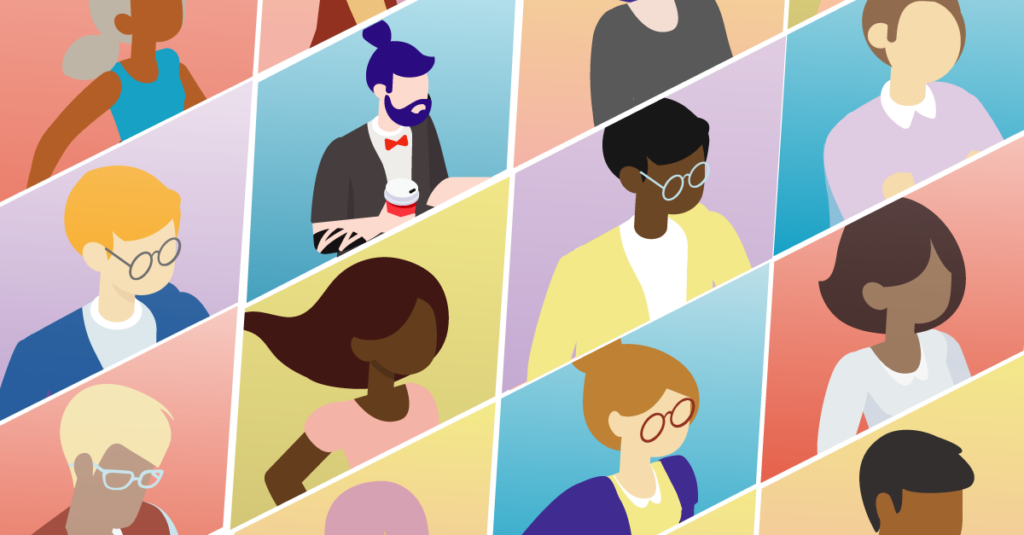Defining the FlexUp program and recruitment process
As a recognized leader in agile business transformation, greenfield digital development, and legacy systems modernization, Flexion’s clients rely on the company’s technical expertise to complete their jobs. Based on that, the company has historically hired mostly senior software engineers with many years of experience.
However, when the company began to build out the advising side of its work, the leadership team recognized the need to create more junior positions to add variety to their thinking and problem-solving capacity. It was also a way of investing in the industry’s future.
Flexion leadership created an apprenticeship program, now known as FlexUp, to meet these goals and has been periodically bringing apprentices into the company as Junior Software Engineers since July 2020. An additional position in UX design is being added to the latest cohort.
Paying it forward is part of Flexion’s legacy
“We think Flexion has a lot of secret sauce when it comes to agile software engineering,” says Rick Giese, a company vice president and founder of the program. “And we wanted to develop a pathway that gives back to the software industry by training newcomers using the Flexion way of doing things. We also wanted to help people from multifaceted backgrounds get started in an IT consulting career, which is typically harder for entry-level people to access.” Talent is hard to come by, and Flexion was willing to invest in growing its own by establishing this program. “By using the apprenticeship model, we are specifically providing valuable experience and training that potentially leads to a position with Flexion,” Rick adds.
What is the FlexUp program?
The program provides apprentices with limited-term employment. During this time, program participants receive on-the-job training and hands-on experience with a team. They are also introduced to the option-based way the company operates using the Flexion Fundamentals as a guide. Upon graduation, apprentices may receive an offer for a full-time position.
Recruitment process for engineering apprentices
According to Rick, “We specifically recruit from less traditional sources. Instead of looking to the University of Wisconsin-Madison, home of our corporate headquarters, or a school such as Stanford, we concentrate on boot camps. This form of crash-course learning does not have the broad curriculum a university would have. It is focused solely on writing code, which prepares Junior Software Engineers well for joining a Flexion team.”
Flexion works with a handful of IT boot camps whose training philosophy aligns well with the company, especially with how student teams work and the technologies they use. Up to 90 percent of recruits come from boot camps, while the other 10 percent come from referrals within the company.
“We especially like to work with veteran-focused boot camps,” says Chris Giese, Recruiting Manager. Some allow veterans to use the GI Bill to pay for their training, which can cost from 10K to 20K and take several months to complete.”
Arshia Syed, Director of Human Resources, agrees that giving opportunities to veterans and second-career applicants is important. “This program is a great opportunity for fresh boot camp grads and anyone who wants to switch careers. For example, we have successfully hired many veterans due to this program, which was otherwise a challenge as most of these veterans are transitioning into the workplace and may not have the number of years of experience that our typical IT jobs require. In return, it helps us to build a pipeline of skilled, rich talent.”
Uniqueness and commonalities among engineering applicants
While applicants come from varied backgrounds with unique life experiences, they do share something in common: All apprentices who have graduated from the program have been embarking on a second career. “We didn’t start with the goal of training people seeking a career change, but those are the candidates who consistently rise to the top of our list,” Rick says.
But why? “In our experience, people who are changing their careers have a high level of motivation, which turns them into high caliber team members,” says Tom Willis, a Foundational Components Product Owner, and another program leader.
“Also, they come to us with a higher level of general work skills,” Rick adds, meaning that they know how to organize themselves to accomplish tasks and goals, which is an added advantage.
Why Join FlexUp?
The reasons for joining the apprenticeship program are as extensive as its applicants.
Scott Pawlak came to the apprentice program from long stints in the army and as a police officer. He wanted to return to an earlier life goal by pursuing a career in the software industry. After trying to do it through part-time self-study, he says, “I wanted more formal training for greater speed and direction.” So, he chose the boot camp route, which led to the opportunity at Flexion.
Before Miriam Miest-Moore applied to the program, she had been thinking about switching from her career as a claims adjuster with a major insurance company for some time. Her husband, also a developer, encouraged her. She was a strong candidate for the switch with her degree in mathematics.
Carlos Peña had a degree in political science and had worked as a paralegal. Thinking about changing careers, he researched employment stability and discovered that during the 2009 economic downturn, developers had the lowest unemployment rate. That inspired him to make this career switch. “A friend of mine worked at Flexion and recommended I check out Flexion’s apprenticeship program.
Desiree Bradish took a more circuitous route to the program. She went from teaching English in South Korea to working on an animated television show to designing graphics for vehicles while taking care of her father, who was ill. “While I found joy in my employment, and it was a blessing to be able to help out family members who were having hardships, I needed a change, not just for my future, but as an example for my nephews and niece.”
Salome Ranson, a Speech-Language Pathologist for pediatric patients with disabilities, had a very satisfying career. But after ten years in this field, she was ready for a new challenge. “I wanted formal training in something I would be excited to do daily.” And coding software was her hobby. As a private practitioner, she worked alone and was ready for a team experience.
Andrew Shumway was an Ophthalmic Technician and did eye exams. “I wanted something better for my family and me and decided to go for it.” Like many other apprentices, Andrew loved technology and solving complex problems.
Drawing wide-ranging talent into the Flexion family is one of the main goals of the FlexUp program, and it’s exciting for senior Flexioneers to meet and work with fledgling software engineers. But first, applicants must apply for and be accepted into the program — then undergo three months of training.
If you want to apply for the FlexUp program, watch our Careers page for announcements.
Stay tuned for the second post in our three-part FlexUp series.




